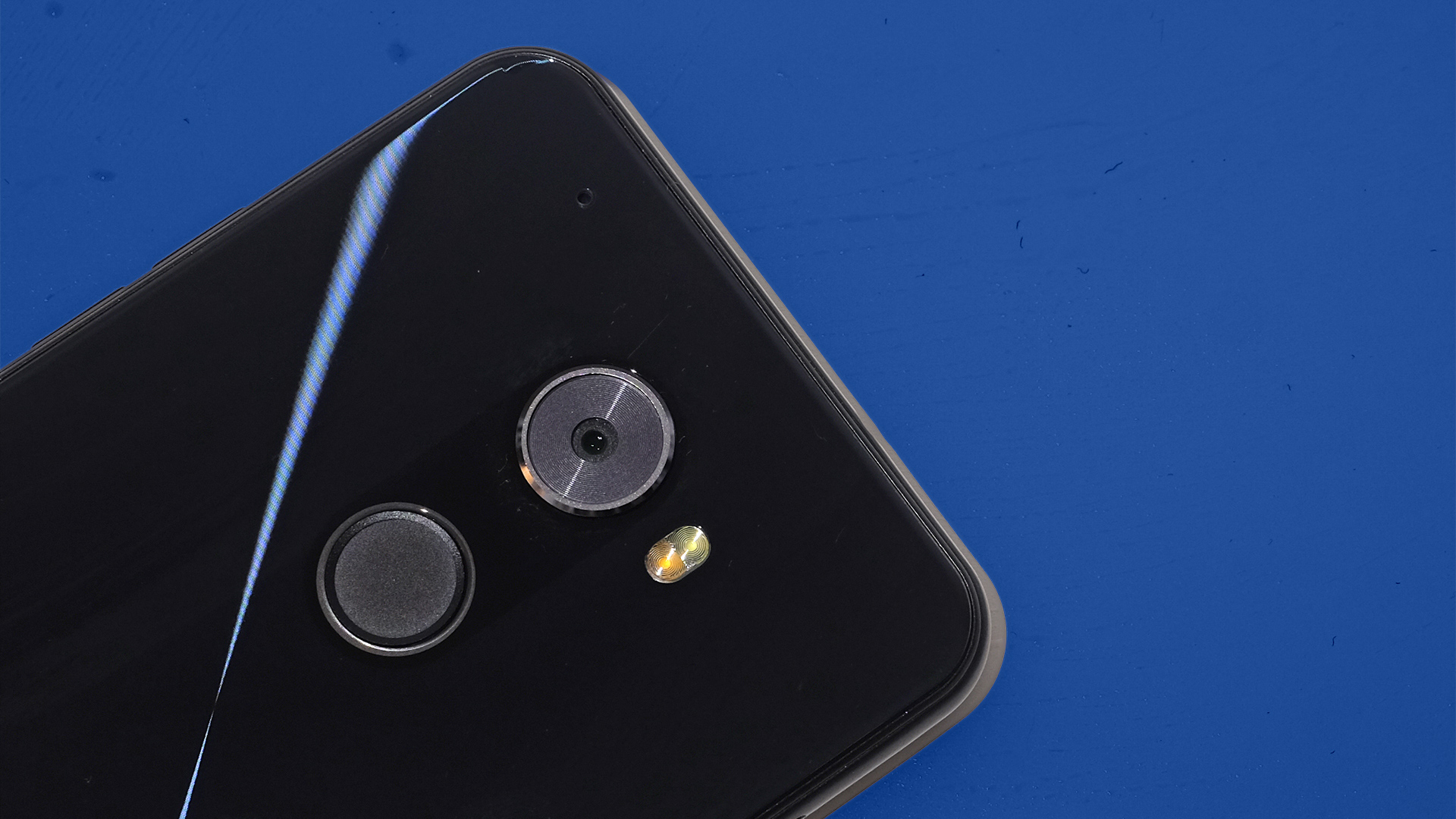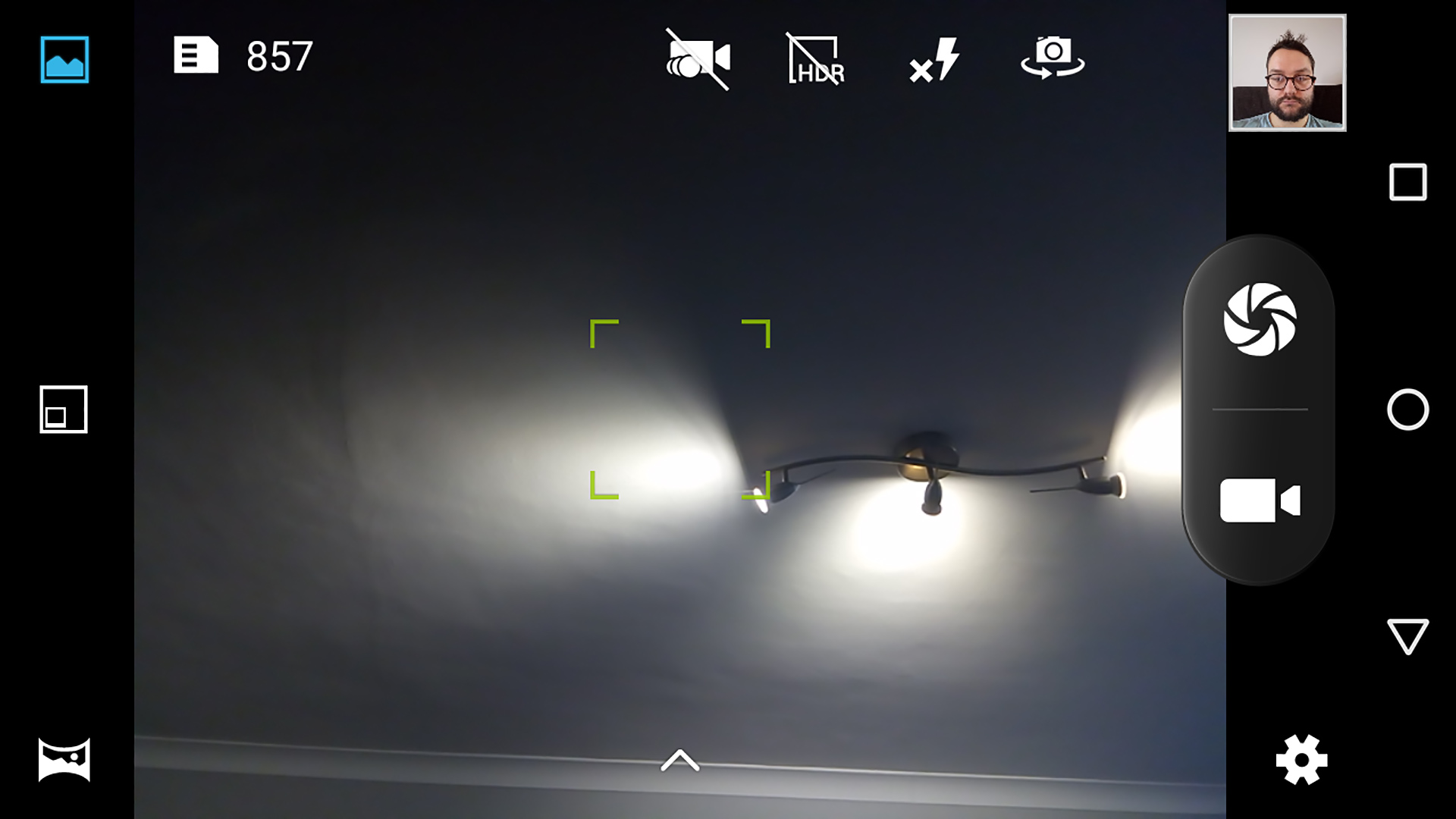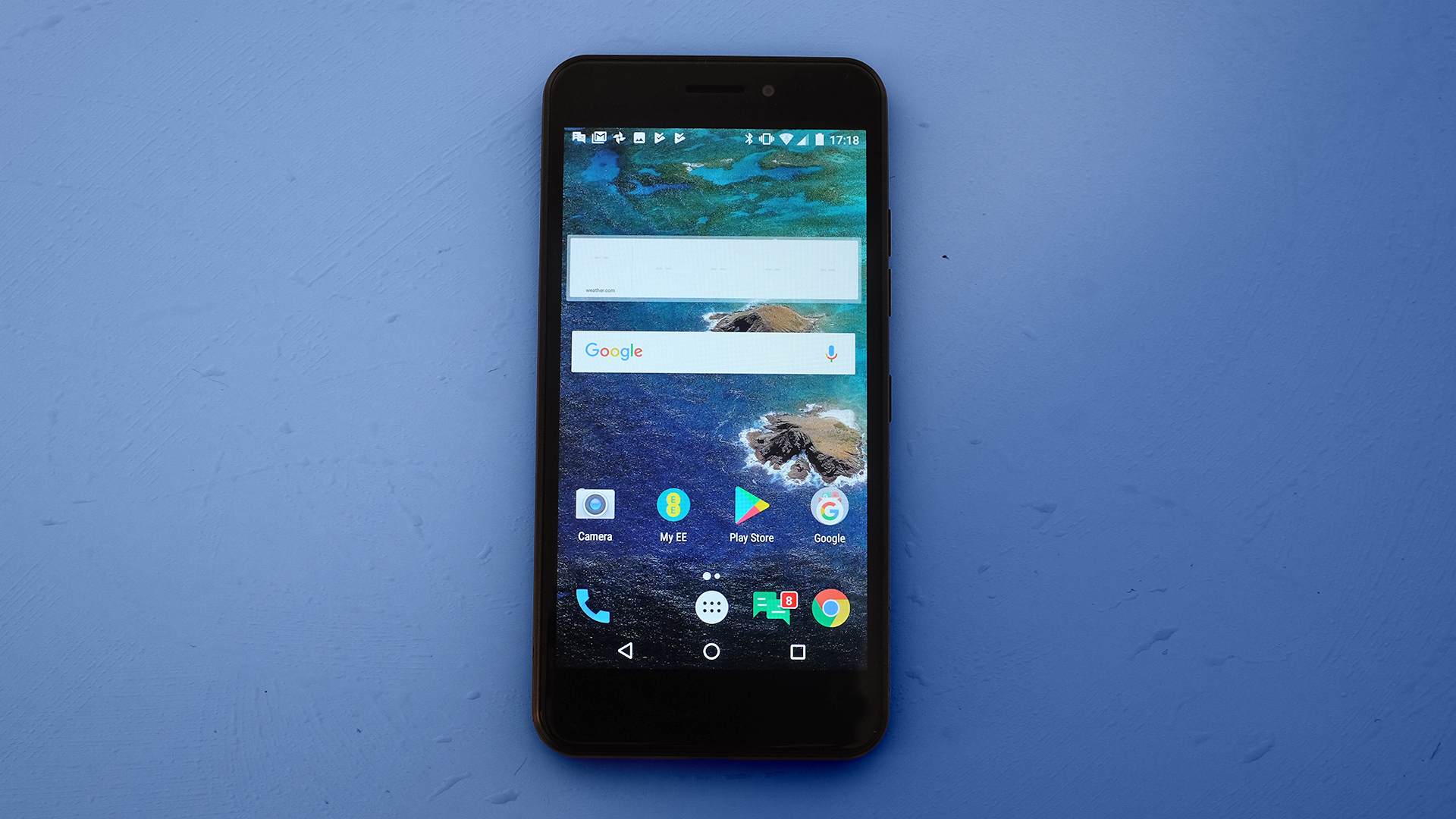Why you can trust TechRadar
Battery life
- 2,500mAh battery
- Reasonable life
The EE Hawk has a 2,500mAh battery. That's smaller than the 2,800mAh of the Moto G5, but let's not forget this phone has a lower-resolution 720p screen, which should in theory use less power.
It doesn't do too badly either. A 90-minute video played at maximum brightness takes 17% off the battery. This actually beats the Moto G5, which loses 22% in the same test: the lower-res screen does make a difference.
We've found moderate general use will see the Hawk last a full day, if not much more. Like most budget phones, the aim is to deliver good stamina, not class-leading battery life.
20 minutes of Real Racing 3 takes 8% off the battery, suggesting the Hawk will last around 4 hours 10 minutes of high-end gaming. Again, it's not bad but not amazing either.
The phone uses a USB-C cable to charge like most new mobiles, although doesn’t have ultra-fast charging.
Camera
- Limited software
- Slow HDR
- Fair photo quality in daylight
The EE Hawk has a conventional camera setup for a phone in its class. There's a 13MP camera on the back with a dual-LED flash and an 8MP camera on the front.
Its hardware sounds good enough, even though it uses Samsung image sensors rather than the Sony kind used by most of the best budget performers. However, there's nothing special going on in the software, at all.
The EE Hawk's camera app can be slow to load up, which is annoying if you're trying to capture a fleeting moment. And other aspects we consider near-essential are missing from the app.

There's no auto HDR mode for example. HDR, which reveals more detail in the darkest and lightest parts of an image, is either on or off, and has to be switched over manually. You won't want to use HDR too often either as it's extremely slow to shoot, like a phone of several years ago.
Focusing can be slow too, although the EE Hawk does manage to avoid the most consistently annoying kind of camera performance issue: shutter lag. There's just a fractional delay between hitting the shutter and capture occurring with the standard mode.
So while there are numerous ways to improve the Hawk's camera experience, it's still reasonably enjoyable to use if you stick to regular shooting (rather than HDR).
Image quality is decent in good lighting, with generally good exposure metering and reasonable sharpness across the frame with easy-to-capture day-lit scenes. However, there are signs the Hawk uses an entry-level sensor that can't keep up with, for example, a phone with a better 12MP sensor and smarter processing.
Fine texture detail can appear dithered, indistinct or noisy. And while the Hawk is surprisingly adept at dealing with tricky lighting, with a bright source in shot, it doesn't have the dynamic range to make these images really pop.

Again, it could do with smarter, more usable HDR processing. Like other phones that use Samsung's budget 13MP sensors, you'll probably be happy, but not blown away by this camera.
As with most other budget 13MP phones, photos start to look significantly worse with indoors or low light. Contrast and punch drains away, and more noise creeps in fairly quickly. The EE Hawk is a case of just-good-enough hardware matched with software and processing that doesn’t wring the best out of it.
That doesn't mean you can't eke some great shots out of the EE Hawk, just that your hit rate isn't going to be all that high.
For video, you can shoot at 1080p and electronic image stabilisation crops into the frame to reduce motion judder.
Around the front the EE Hawk has an 8MP camera. It can carve out more detail than a very basic selfie camera, but images tend to look a little soft in parts, lacking the life of a higher-quality 8MP sensor. And colours look glum if you don't have a decent amount of light with which to work.
Camera samples




Current page: Battery life and camera
Prev Page Introduction, key features and design Next Page Anything else I should know?Andrew is a freelance journalist and has been writing and editing for some of the UK's top tech and lifestyle publications including TrustedReviews, Stuff, T3, TechRadar, Lifehacker and others.

